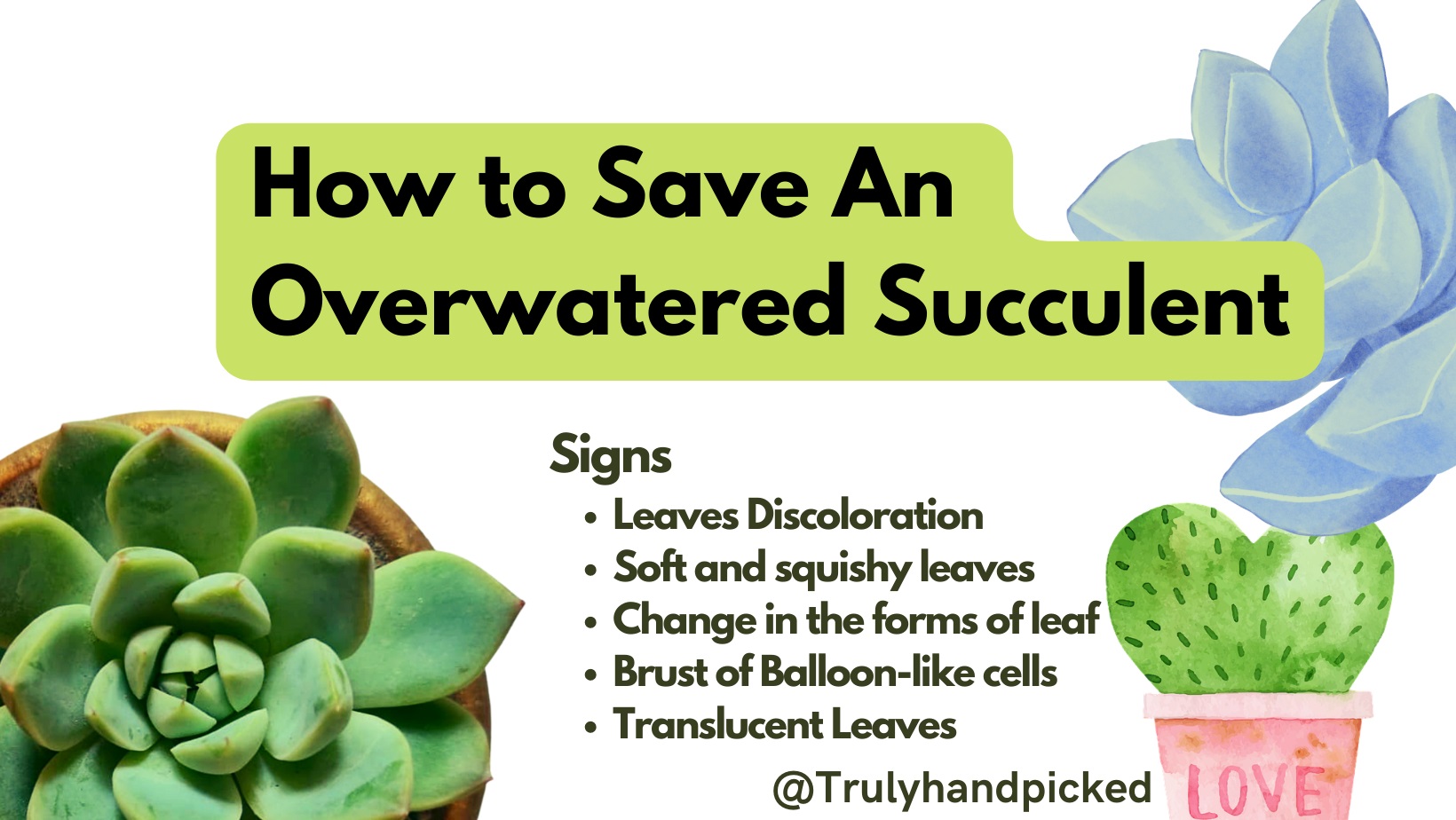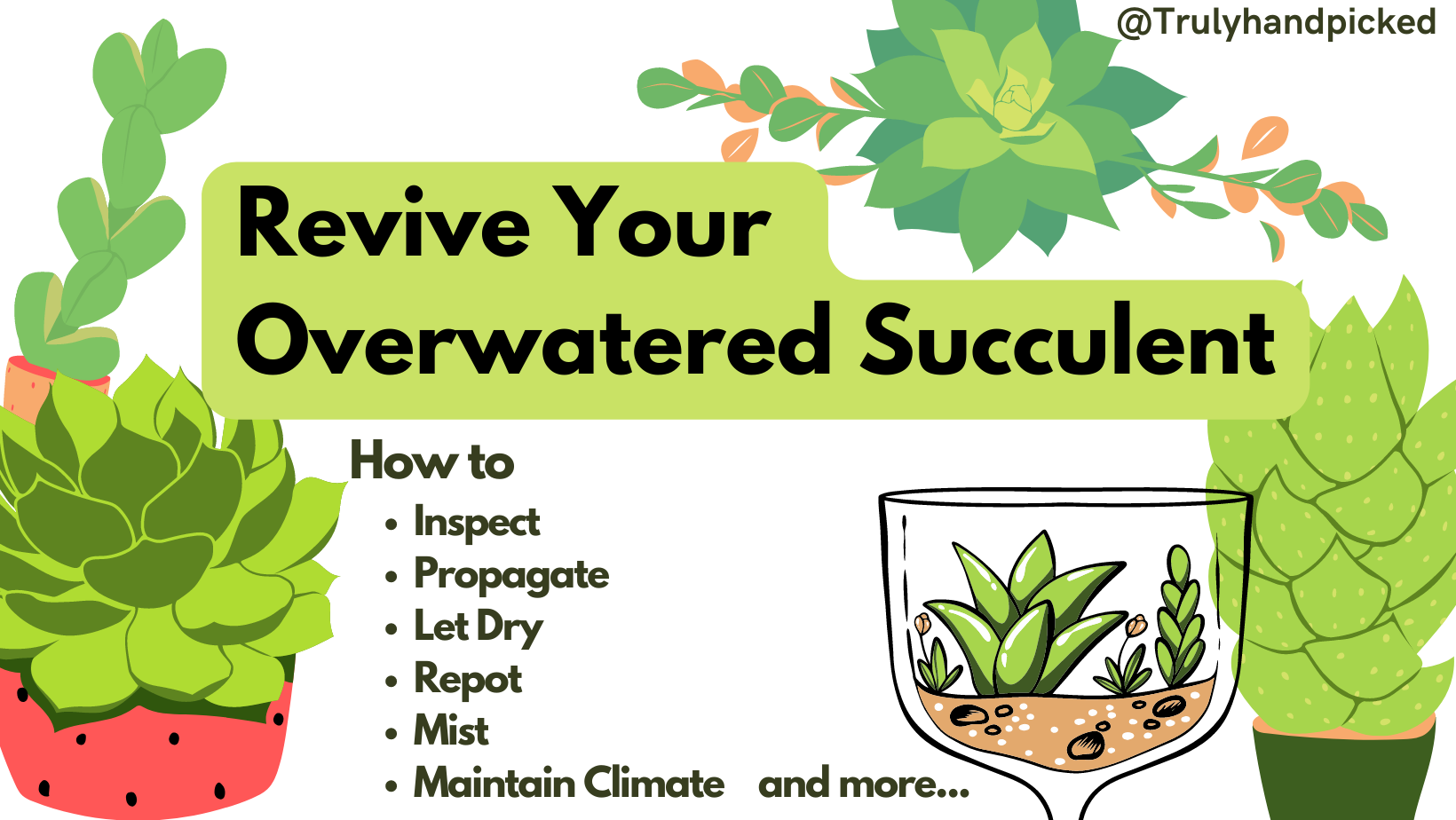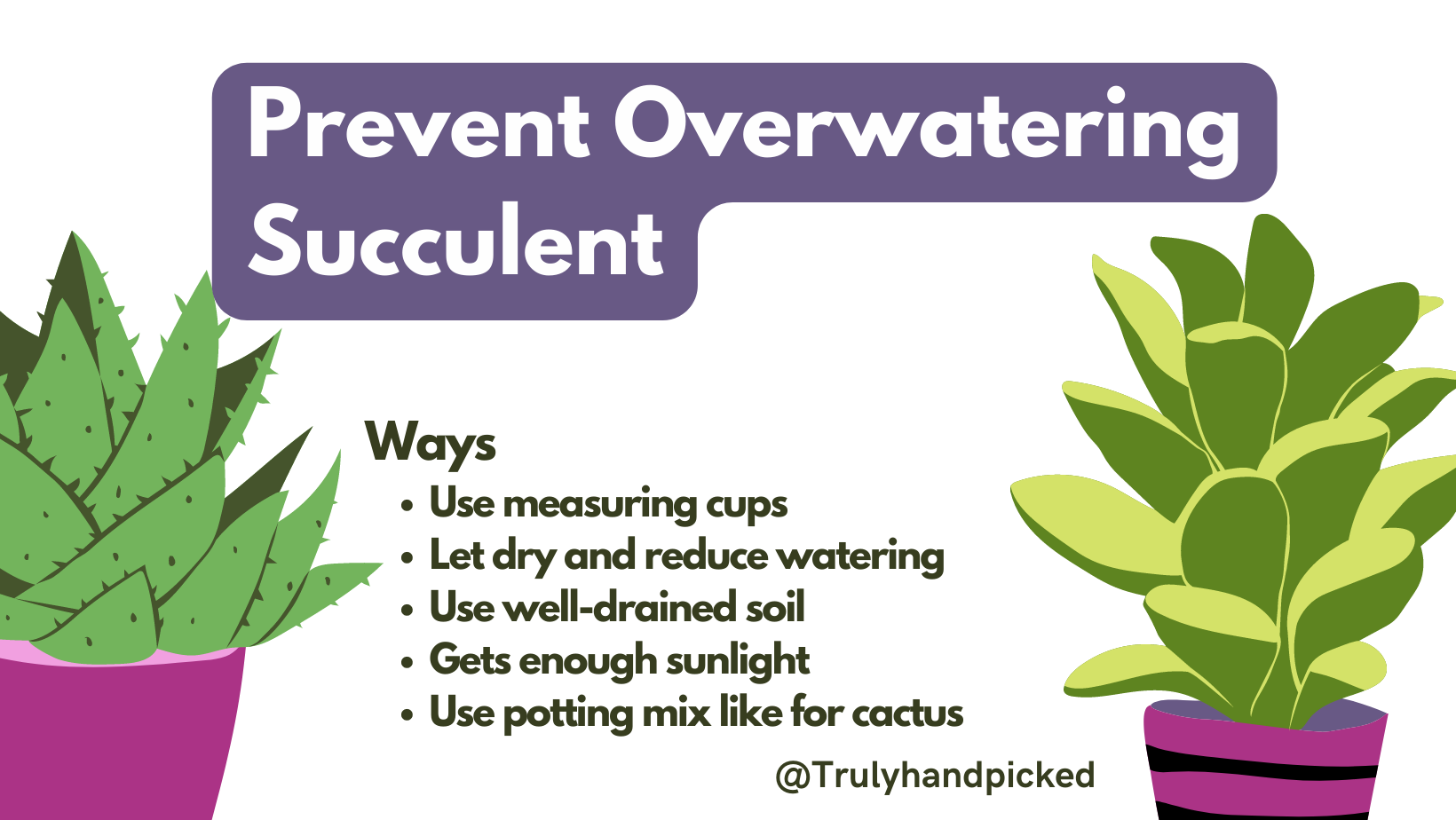Succulents are the most low-maintenance houseplants that can provide you with an exotic desert look with minimal caring. A thriving succulent appears mesmerizing in any corner of your house.
Unfortunately, these houseplants could ruin the entire view of your place while appearing in dry or rotten forms. Overwater in the commonest causes always works behind such dying succulent.
If your succulent plant is suffering from the same issue, apply some easy but effective tricks to reserve your succulent from dying. However, before that, you must be certain that your plant is undergoing overwatering, and then, apply the possible procedure to get rid of the consequences of overwatering in a succulent efficiently-
Signs of an Overwatered Succulent:
You don’t need to validate much to find out whether your succulent is getting too much water or not. In reality, the signs of overwatering are quite apparent on a growing succulent. Here are the tops symptoms of overwatering in your favorite succulent plant-
- The discoloration when the actual shade of your chosen succulent varies. Sometimes, it produces leaves with a completely different color than its real shade, while sometimes, they turn completely brown or bluish-black
- Change in the forms of leaf, where succulent will grow in a very unusual shape than their regular form
- Translucent leaves, like growing leaves with an undefinable radiant glow that doesn’t last long
- Brust of Balloon-like cells, due to overfill with excessive watering. This will damage the cell structure of your succulent entirely and rot the leaves as well as roots shortly
- Over soft and squishy leaves, unlike normal succulent leaves. The leaf portion of a succulent usually grows with a firm outer texture. This shield turns over soft or squishy only when you water your succulent more than its actual needs.
How to Save Your Dying Succulent:
To save a dying succulent from overwatering issues, you must take proper curing methods in time. Remember that you may heal a succulent from such a tricky overwatering condition, but it won’t be easy at all. Some effective hacks to save an overwatered succulent capably are as follows-
Inspect To Find The Healthy Parts:
Try to scrutinize your succulents deeply to find out the severity of the damage your plant has from overwatering. This way, you will find the vigorous and propagatable sections out of your plant successfully.
If you locate any leaf that can be salvageable, save it to reuse for replantation. Keep the undamaged and healthy stems as well during this process, to repot them either.
You can even save some undamaged roots as well during a successful inspection course of an overwatered succulent.
Propagate:
You can propagate those collected healthy parts in a new and fresh growing medium if you want. Propagation gives those toughie parts a fair chance to regrow with the minimal caring regimen.
Make sure, that you have a whole leaf or 3-4 inches unaffected stem for the propagation. A broken leaf or too much tiny stem wouldn’t come out as a successful propagation course at all.
Let The Survivor Dry:
Once you cut off the entire healthy parts with a clean garden tool, set them out under direct sunlight. Keep them this way for a couple of days until you find them entirely soaked.
Direct sun heat will make the extra fleshy quality of the succulent controlled entirely. The squishy cells of your succulent, which usually happens due to overwater, will turn fresh and dry again with this step.
Repot Your Succulent:
Now, you need to repot your collected succulent part carefully in a new set of planter and potting mix. Choose a planter that is moderately big and perfect for the roots of your succulents.
Make sure the pot has properly-working drainage holes as well. Next, choose a potting mix by combining loose, grainy soil, pumice, perlite, sand, and any organic fertilizer.
You can dip the stem or leaf in a rooting hormone if you want, just to increase the thriving possibility of your succulent effectively.
Water Mindfully:
Once you repot or propagate your succulent leaves or stem cutting in a suitable potting mix, water it entirely. To water your plant accurately, use only distilled water, water once a week.
Do not water your succulents more than ½ inches deep at a time. Make sure the excess water is draining from the bottom of your planter, every time you water it thoroughly. Besides, try to let the soil soak well between your watering schedules.
Try Misting:
If you don’t want to water your succulents every week, skip this regimen and try a misting schedule in between two watering routines.
As in, water your succulent once a week, mist it in the other week, then water it, and then mist it again. Only use distilled or filtered water for misting as well and avoid using tap water under any circumstances.
Rotate the planter once a day to let your succulent get proper sunlight in every wet corner after a proper misting session.
Maintain Proper Climate:
Put your succulent in a spot that is cacti tolerant. The temperature should be between 40° to 80° F consistently. Make sure the room or the spot where you put the planter of your succulent is moderately warm and high in humidity.
Despite being drought-tolerant, succulents always prefer medium to high humidity like tropical plants. if you can’t provide adequate humidity to your succulents, try to use an artificial humidifier without a second thought.
Keep Away From Peak Hours Direct Sunlight:
Succulents couldn’t stand peak direct sunlight or full sun exposure under any condition during their growing session. So, attempt to provide the sun to your growing succulent with partial to full shade.
Keep your plant always away from open sun exposure, especially, during scorching noon time. Hence, it will be better if you can place the planter of your succulent a bit away from open windows.
Closely Watch Your Plant:
Try to give your plant a close look after every couple of days. If you find that the plant is not suffered enough by overwatering and you can revive the whole plant instead of only a leaf or stem, take curing methods immediately.
Frequently validation helps you to detect the overwatering issue in time and increases the possibility of reviving your succulent as well. So, try to check your plant once every couple of days unswervingly.
Avoid Overwater Again:
The most important step in this regard, stop overwatering any further. If you want to get rid of this issue permanently, try not to repeat the mistake of overwatering every for your growing succulents.
Due to being a drought-tolerant, a succulent can stand underwatering but can’t tolerate overwatering ever. So, next time you water your indoor succulents, make sure they are thirsty enough and drain the excess water immediately after watering.
How to Avoid Overwatering Your Succulent For Next Time:
To avoid this problem of overwatering follow these simple yet smart tricks carefully-
- Use measuring cups for watering
- Never water your succulents until they seem entirely thirsty
- Always use well-drained soil and pot with good draining quality
- Use the right potting mix that is loose enough to drain faster
- And let the plant suck enough sunlight to let the water dry adequately.
Pinterest Image: How to Save an Overwatered Succulent
FAQ:
Will The Leaves Grow Back From an Overwatered Succulent?
If the roots and stems of your overwatered succulent are not rotten entirely, there are some possibilities still left that your succulent leaves will grow back soon with proper care.
How Long Does It Take To Save An Overwatered Succulent?
It is a complete process to save and recover the overwatered succulent which is partially damaged. So, it may take 3-4 days to a whole week to recover and thrive again through the perfect replantation course.



